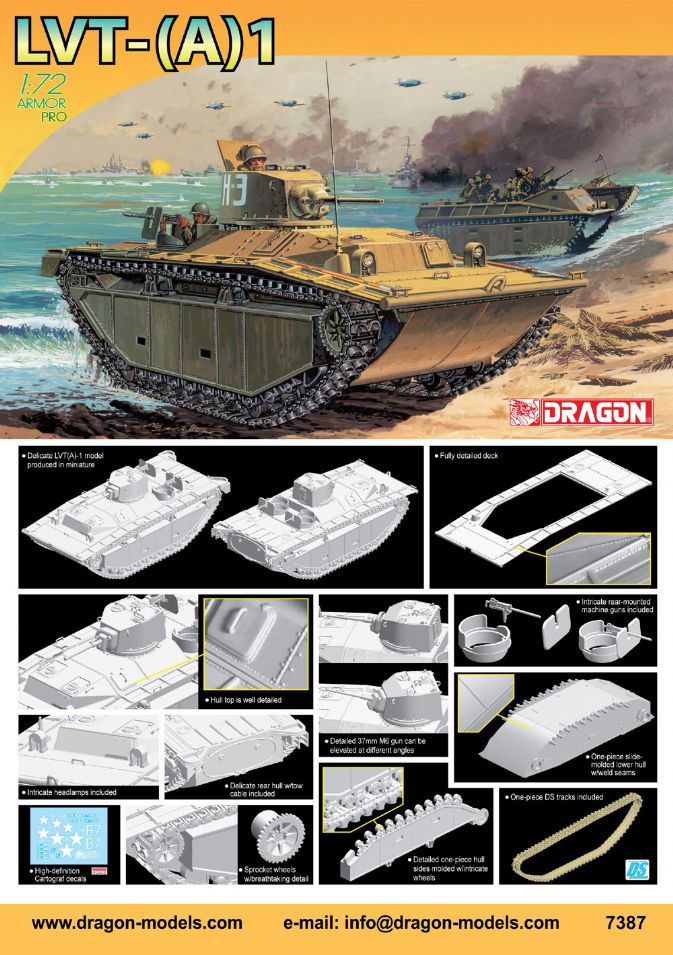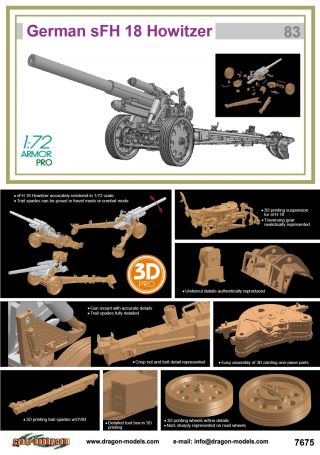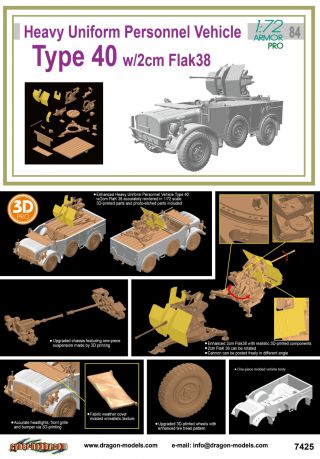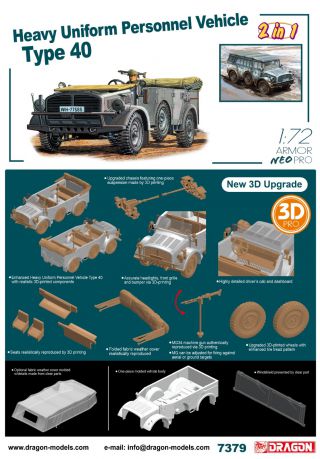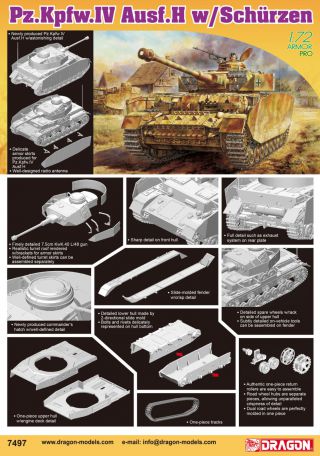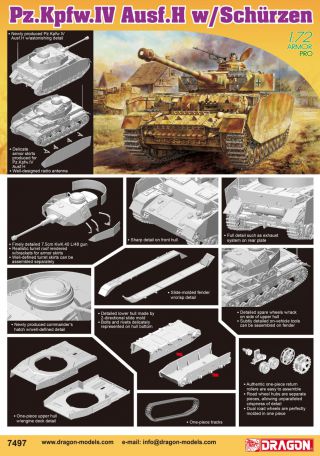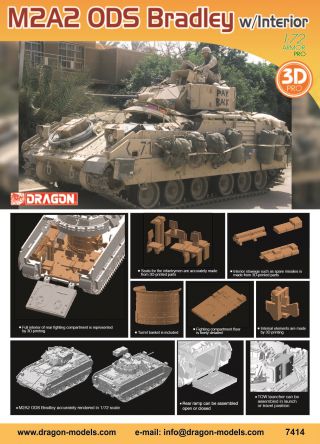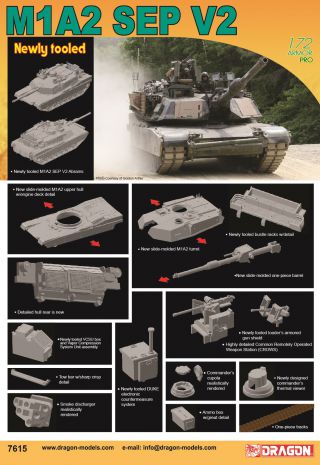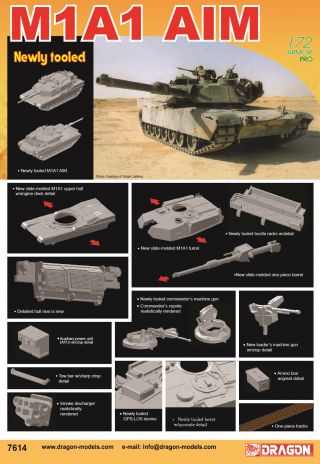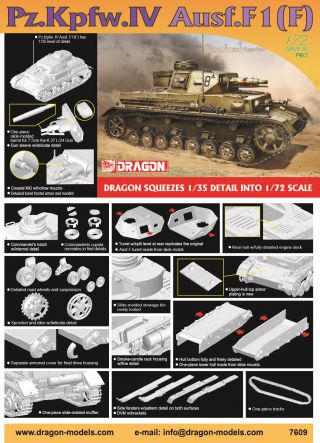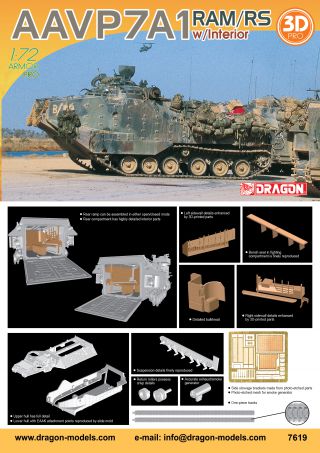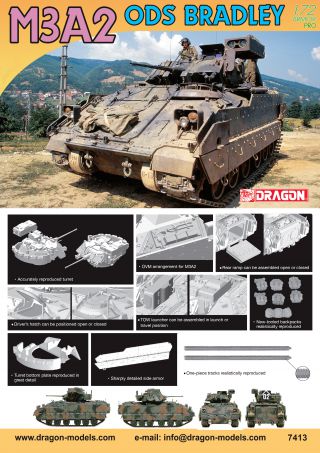HOME → Dragon Plastic Model Kits → 1/72 Military → 7387
Barcode: 0 89195 87387 3
Packaging: 48 Pieces per carton
Box Size: 6.4" x 10.2" x 1.9"
Brand New Tooling!!!
Features:
- Delicate LVT(A)-1 model produced in miniature
- Fully detailed deck
- Hull top is well detailed
- Intricate headlamps included
- Delicate rear hull w/tow cable included
- Sprocket wheels w/breathtaking detail
- Detailed 37mm M6 gun can be elevated at different angles
- Intricate rear-mounted machine guns included
- One-piece slide-molded lower hull w/weld seams
- Detailed one-piece hull sides molded w/intricate wheels
- One-piece DS tracks included
- High-definition Cartograf decals
WWII saw a number of innovative new solutions to meet the demands of modern combat. One such class of military vehicle was the amphibious tractor, often referred to by US servicemen as amtracs. The first such Landing Vehicles Tracked (LVT) were produced by the Food Machinery Corporation (FMC) for the US military. By the end of WWII a total of 18,621 LVT family vehicles had been manufactured. The original military LVT-1 appeared in 1941, but one weakness was its lack of armored protection, especially in amphibious assaults such as those that occurred at Tarawa. The LVT(A)-1 helped rectify this shortcoming, with the “A” in the nomenclature representing “armored”. In this vehicle’s case, the armor was half an inch thick.
Despite what its name suggests, the LVT(A)-1 was actually based on the LVT-2, and it was employed as a fire support vehicle. It featured an M3 Stuart turret containing a 37mm M6 gun. It also bristled with five .30-cal machine guns. A total of 510 LVT(A)-1 vehicles were eventually produced. It could achieve speeds of 12km/h in water, and the vehicle weighed 13,180kg. This important amtrac was used in such battles as those at Saipan, Guam, Tinian and Peleliu during the bloody Pacific campaign.
Dragon has successfully recreated the LVT(A)-1 in plastic at a scale of 1/72. The kit’s very smartly designed, with the bottom hull made as a single-piece molding. This provides a stable and vital foundation on which to add such details as the complicated suspension system. Although the running gear is originally complex in design, Dragon’s engineers have ensured it’s easy to assemble for modelers. Upper hull detail can also be easily attached to the basic hull. The deck is well detailed, and even the weld seams are visible. The turret is also a product of slide molds, and so it’s well constructed. As would be expected, the gun muzzle is hollowed out. This is a fine kit of an interesting American amphibious fire support vehicle, and modelers can easily insert it into the most dramatic of Pacific war dioramas.

